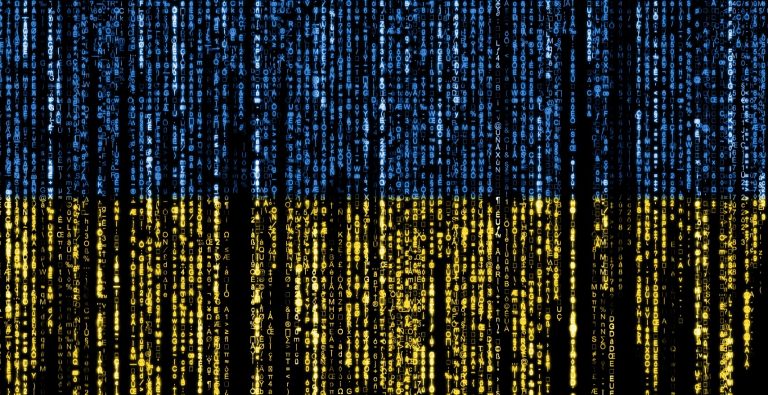21st century Total Wars will enlist technologies in ways we don’t yet understand, writes Jordan Richard Schoenherr

The war in Ukraine is not only the largest European land war since the Second World War. It is also the first large-scale shooting war between two technologically advanced countries to also be fought in cyberspace.
And each country’s technological and information prowess is becoming critical to the fight.
Especially for outmanned and outgunned Ukraine, the conflict has developed into a Total War.
A Total War is one in which all the resources of a country, including its people, are seen as part of the war effort. Civilians become military targets, which inevitably leads to higher casualties. Non-offensive infrastructure is also attacked.
As new technologies like artificial intelligence, unmanned aerial vehicles (UAVs) such as drones and so-called ‘cyberweapons’ such as malware and Internet-based disinformation campaigns become integral to our daily lives, researchers are working to grasp the role they will play in warfare.
Jordan Richard Schoenherr, an assistant professor in the Department of Psychology, writes in a new paper that our understanding of warfare is now outdated. The role sociotechnical systems—meaning the way technology relates to human organizational behaviour in a complex, interdependent system—plays in strategic thinking is still far from fully developed. Understanding their potential and their vulnerabilities will be an important task for planners in the years ahead.
“We need to think about the networks of people and technology—that is what a sociotechnical system is,” Schoenherr explains.
“Social network analysis is something that has only been the focus of serious discussion in military strategy and tactics in recent decades.”
 Jordan Schoenherr: “Social network analysis is something that has only been the focus of serious discussion in military strategy and tactics in recent decades.”
Jordan Schoenherr: “Social network analysis is something that has only been the focus of serious discussion in military strategy and tactics in recent decades.”
New weapons, old fears
Nowhere are recent breakthroughs in technology being more quickly deployed than in the war in Ukraine, where both sides are using new technologies to their advantage.
For Schoenherr, there are precedents for what he refers to as the “Totalization of warfare in sociotechnical systems.” He reviews cyberwarfare landscape from conflicts in Kosovo (1998–1999), Iraq (2003–2011) and Azerbaijan and Armenia (2020).
Schoenherr also considers the daily ongoing cyberattacks by North Korea and China against their adversaries. None of them, he concludes, fit the definition of the sociotechnical Total War.
“Cyberwarfare only really became substantive in the early 2000s,” he says. “Until then, it mostly consisted of people defacing websites. But as we moved into the present era, we see state and non-state actors realize that psychological warfare can be brought into the Internet age. This type of warfare can then be combined with novel, AI-based technologies such as malware and drones.”
The Ukraine war has already seen cyber arena interventions by non-state actors like IBM, Elon Musk’s Starlink and hackers working on both sides.
Schoenherr notes that as AI, UAVs and 3D-printed materials make their way to the battlefield, the issue of supply chain also becomes increasingly important to study.
High-tech weapons are useless without specialized components. But, geopolitical tensions can lead to illicit sales or smuggling by third parties. He points to Western-made parts found in downed Russian drones as an example.
Finally, Schoenherr warns that the strategic-level culture of paranoia that drove ever-burgeoning nuclear arsenals during the Cold War is just as present today.
The Total War model has changed dramatically over just a few decades. Erasing the boundaries between militaries and civilians and the start and end of wars can escalate conflicts.
By understanding how this happens, Schoenherr says he believes we are better equipped to manage and deescalate conflicts that can rapidly spin out of control.
Read the cited paper: “The First Total War and the Sociotechnical Systems of Warfare”




